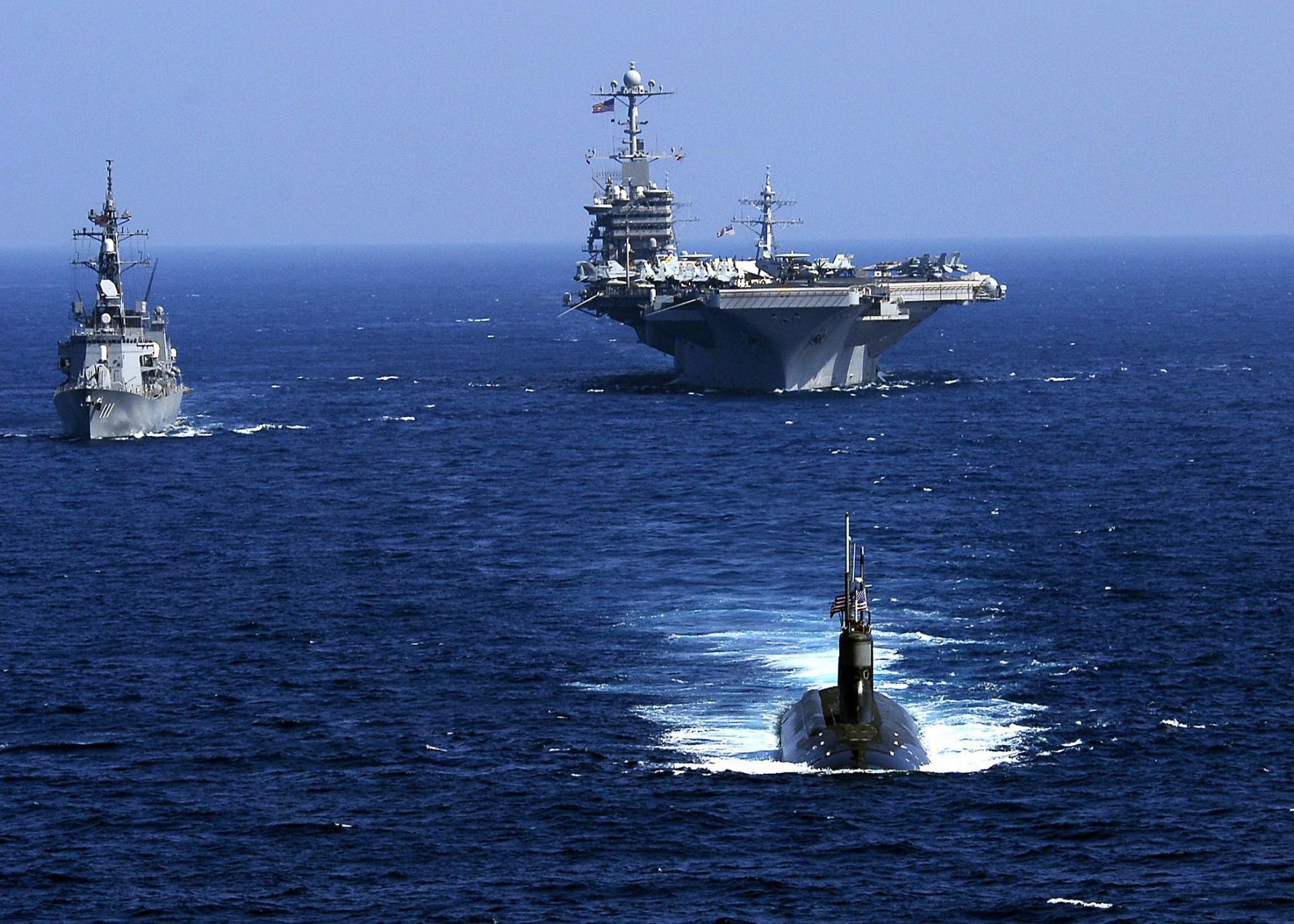The Human Systems Simulation Laboratory at INL allows researchers to simulate industrial control rooms to improve performance. (Photo: INL)
In the 1960s, nuclear energy established itself as a mainstay of the electrical grid for its ability to produce carbon-free, safe, and reliable power. Indeed, nuclear energy currently provides about 50 percent of carbon-free electricity in the United States, but a major challenge is its cost.
The NuScale control room simulator has been used to showcase the plant’s design, prototype new displays, and test the operator and supervisor procedures in a fully digital control room. (Photos: NuScale Power)
Since the inception of commercial nuclear power in the United States, every control room in every nuclear plant has looked essentially the same. You will see fixed alarm tiles, red and green lights, rows of switches, and analog meters. Until about a decade ago, you would even have seen paper charts (now replaced by digital versions of those same charts). Licensed operators have shown through a proven operating history that this control room design is safe and effective. Genius definitely went into the complexity of circuits and placement of switches and indications in the design, but things have come a long way over the years, and new technology, updated plant designs, and the need to improve efficiency and maintain reliability have impacted staffing and the role of operators. A control room update is long overdue. So, what lies ahead for the future of nuclear control room design? What possibilities exist for the next generation of plants?
December 2, 2022, 3:03PMNuclear NewsBrian Dassatti, Kamila Blain, and Jenn Sinkiewicz Teledyne FLIR PackBot® conducts visual inspections in a hazardous area.
Mobile unmanned systems, also known as MUS, encompass a range of robotic devices, including drones, ground vehicles, crawlers, and submersibles. They are used for a wide range of industrial and defense applications to automate operations and assist humans or completely remove human workers from hazardous conditions. Robotics are ubiquitous in industrial manufacturing. Military robots are routinely employed in combat support applications, such as reconnaissance, inspection, explosive ordnance disposal, and transportation. Drones are used in many industries for security and monitoring, to conduct aerial inspections or surveys, and to capture digital twins. Wind and solar farms use MUS technologies for day-to-day operations and maintenance.
Energy secretary Jennifer Granholm (in purple blazer) and the ANS-sponsored delegates pose in front of the Nuclear for Climate booth at COP27.
Nuclear energy is no longer on the fringes of the international climate conversation. At COP27, the United Nations climate change conference held in Sharm el-Sheikh, Egypt, from November 6 to 18, pronuclear advocates were everywhere—and they were talking to everyone. They populated the International Atomic Energy Agency’s #Atoms4Climate pavilion, the first-ever nuclear pavilion in the 27-year history of the negotiations. Echoing such strong representation, the final statement issued by the conference used language that included nuclear power.
Queen Elizabeth II visits Calder Hall for its ceremonial opening in 1956. (Photo: U.K. Nuclear Decommissioning Authority)
As citizens of the United Kingdom and others around the world mourn the death of Queen Elizabeth II, many have reflected on how the world has changed during the seven decades of the queen’s reign—the same decades that saw the rise of civilian nuclear power.
Calder Hall was already under construction at the Sellafield site in West Cumbria when Princess Elizabeth became queen in 1953. Queen Elizabeth traveled to the site in October 1956 and declared, in a televised ceremony, that “It is with pride that I now open Calder Hall, Britain’s first atomic power station.” Watch the fanfare in a historical clip uploaded to YouTube by Sellafield Ltd below.
America’s nuclear navy presently has 86 nuclear-powered submarines and aircraft carriers. All of them, and their predecessors over the last 60 years, have performed flawlessly, protecting America as well as their crews. Here, the nuclear submarine USS Seawolf leads the nuclear-powered aircraft carrier USS Nimitz and the conventionally powered Japan Maritime Self-Defense Force destroyer JS Oonami DD 111 during exercises in 2009. (Photo: United States Navy)
Just this last April, President Biden officially commissioned the USS Delaware, a new Virginia-class nuclear attack submarine, the 18th built in that class and the eighth and final Block III Virginia-class submarine. (The Delaware was administratively commissioned in April 2020, but the COVID-19 pandemic caused delay of the ceremony for two years.)
A view of the entrance to tower #22, showing the dismantled part of an inclined column.
While the construction of two additional reactors at Slovakia’s Mochovce nuclear plant (Units 3 and 4) may get most of the attention, it isn’t the only major project underway there. In October of last year, plant owner Slovenské Elektrárne commenced the first phase of an effort to revitalize two of the four 125-meter-tall, Iterson-type cooling towers that serve the facility’s two operating reactors—both of which began generating electricity in the late 1990s. Towers #11 and #21 had been refurbished in 2011 and 2012, respectively. The other two, however, towers #12 and #22, had never undergone refurbishment.
July 8, 2022, 7:00AMNuclear NewsBy George Apostolakis, James Ellis, and Steven Nesbit The Diablo Canyon nuclear power plant.
The state of California recently and quite sensibly cracked the door back open for continued operation of the Diablo Canyon nuclear power plant past the current operating license expiration dates in 2024 (Unit 1) and 2025 (Unit 2). The nonprofit North American Electric Reliability Corporation’s recently released 2022 Summer Reliability Assessment highlights the risk of electricity shortages in California. Given that concern, as well as the benefits of continued Diablo Canyon operation—including much needed clean, reliable energy; good jobs; and potential for large-scale production of fresh water—another look at the shutdown decision made several years ago is clearly warranted. Sen. Dianne Feinstein (D., Calif.) reinforced this point when she added her voice to the growing chorus of policymakers advocating extended operation for Diablo Canyon.
Panelists (from left) Adam Stein, Jon Ball, Mike Laufer, and Michl Binderbauer during the Breaking Through: Assessing the Current State and Prospects of Nuclear Innovation in the Race to Decarbonize session at the ANS Annual Meeting.
If nuclear innovators are in a race to decarbonize, it is a race with one finish line—affordable, clean, and reliable power—and many ways to get there. Over 40 fission developers and 20 fusion developers are in the running, and while attendees of the June 13 ANS Annual Meeting executive session on Breaking Through: Assessing the Current State and Prospects of Nuclear Innovation in the Race to Decarbonize heard from representatives of just three of those companies, they presented very different designs and deployment approaches, aptly reflecting the broader diversity of nuclear power innovation.
Session chair Adam Stein, director of nuclear energy innovation at the Breakthrough Institute, welcomed representatives from an advanced non–light water reactor developer (Mike Laufer, Kairos Power), a small modular light water reactor developer (Jon Ball, GE Hitachi Nuclear Energy), and a fusion power developer (Michl Binderbauer, TAE Technologies). Together they explored the challenge of engineering a significant commercial scale-up of advanced nuclear technology by the end of the decade, tackling questions of cost, schedule, supply chain, regulation, and more.












